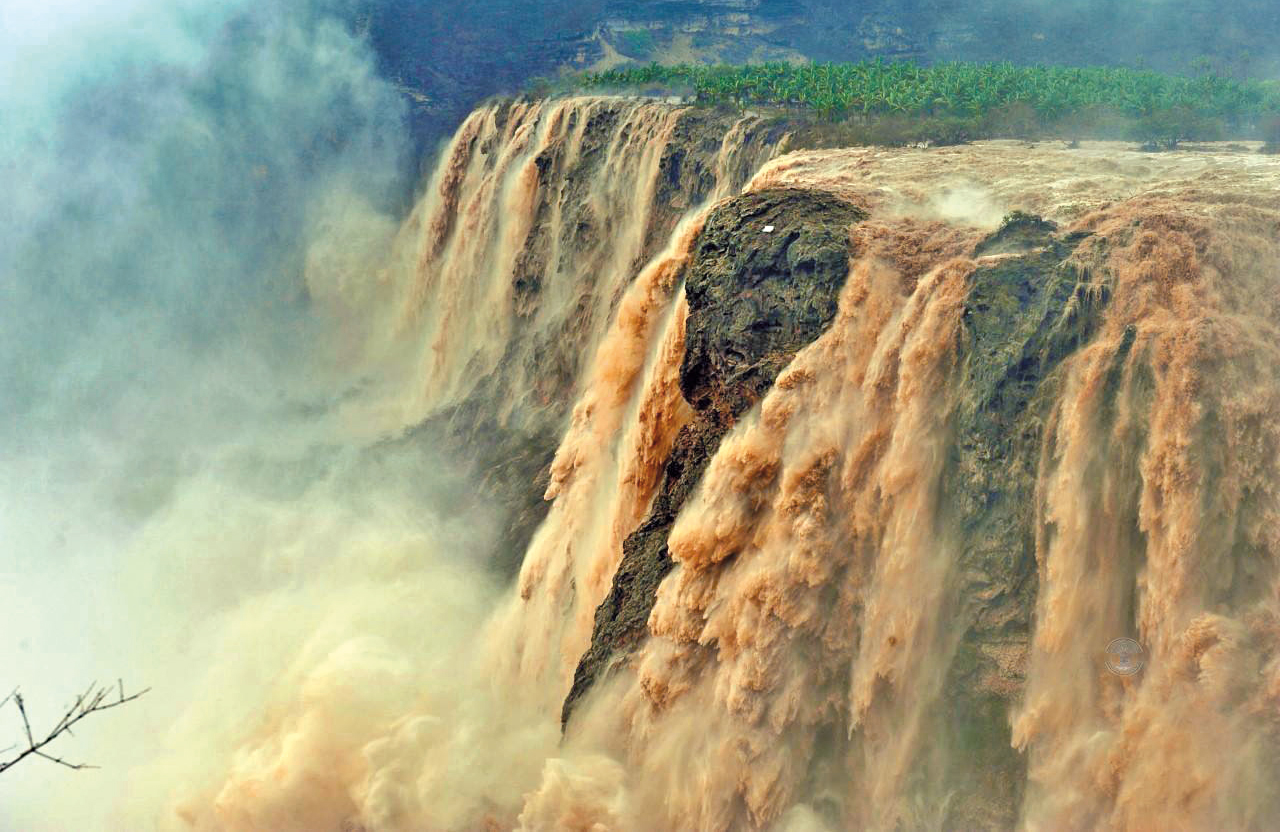

The two cyclones that Salalah faced in less than six months were real endurance tests for the city, its people and the administration. The timing of both the cyclones was worrisome as the first one called Mekunu came just before the Salalah’s most popular Khareef (monsoon) season, while the other called Luban passed through the city just before the beginning of the spring and winter seasons, which attract tourists from around the world in cruise ships and charter flights.
The mood of both the cyclones was devastating, as it was a make and break situation. As if there was a call from the nature that “you make it, I will break it”. Everyone was helpless in front of nature’s fury, but commendable was the role of first responders who took up the challenge by telling the people to “maintain maximum safety by remaining indoors” while standing guard in the middle of the storm directing people not to go further as there was danger of being drowned or washed away.
Post cyclone, the situation was more challenging as the authorities were left with a little time to meet the Khareef season deadline of June 21. Mekunu had hit slightly far from the Salalah on May 25, but its impact on the city infrastructure was massive. Broken roads, bridges and most importantly, access roads to most of the tourist sites were damaged.
The challenge was big in terms of restoration of damaged roads and cleaning of debris. Trees got uprooted and water entered into low lying residential houses.

The government machineries proved their high level of efficiency, planning and their perfect ability to do disaster management and full credit for this goes to the Civil Defence and Royal Oman Police personnel, who won many hearts by saving many lives and properties during and after the cyclone that hit slightly away from Salalah city and made a landfall in adjoining Raysut.
Before the monsoon hit Salalah, access to all the tourist sites was restored as people’s expectations had soared due to the circulation of Salalah greenery and waterfall videos and photos on the social media.
Mughsayl beach and adjoining caves are signature tourism destinations of Salalah. The road leading to Mughsayl had got damaged due to the collapse of two approach bridges. Everyone was surprised to see a two-lane diversion road ready within five days. The road is important due to this being the only connecting link between Salalah-Rakhyout and Dhalkout.
Not only everything was in place for the tourists during the Khareef season, Salalah nicely handled more than 800,000 visitors.
Similarly, another cyclone Luban, that finally weakened into a tropical storm hit Salalah recently. The authorities were well prepared to face the situation due to many lessons learnt during the previous cyclone.
It is a pleasant surprise now for the charter and cruise tourists to find Salalah so green and many natural waterfalls running.
The storm had damaged the makeshift road, which was constructed after the tropical cyclone Mekunu. It was redone in record time ensuring easy access to the tourists as no visit to Salalah is complete without a visit to the Mughsayl beach, its bay and one of the major attractions of Salalah — the blowholes.
During both the adverse weather conditions the government machineries proved their high level of efficiency, planning and perfect ability to do disaster management. Full credit for this goes to the Civil Defence and Royal Oman Police personnel, who won many hearts by saving many lives and properties.
Besides them, all other government functionaries worked in close coordination and proved a nice example of cooperation in which committees and sub-committees did their jobs in perfect harmony.
Cruise tourism in Salalah is beginning to display signs of future potential. Due to its location, the Port of Salalah has the advantage to receive crossing cruises, which are bound either to Asian, European or African countries but make a stopover at Salalah to give its occupants an entirely new experience.
The rugged beauty, which tourist Matty Carvalho calls “the paradise of the Gulf” and recommends “a must visit to have an awesome experience.” Everyone gets a mind-blowing experience even during their short tour of the city, as most of the cruises have a short stopover, maybe for six to 10 hours.
The cruise movement for 2018-19 has already started with a positive and better outlook for the season. With the likely movement of 40 cruise ships from different locations, the destination is expecting more than 30,000 cruise tourists this season.
The vessels coming from countries like Italy, Germany, Egypt, Jordan, Turkey and Denmark and many more destinations after stopover at major ports and cities, these cruise liners are giving good business to local tour operators, who deal with their ground operations and manage local sightseeing services.
Ahmed Said al Afri, Manager of Zahra Tours in Salalah, confirmed this trend and said more cruise ships were lined for Salalah stopover on way to their different destinations. The volume of tourists in one ship varies from 1,000 to 3,000 thus making immediate demand for services to take the tourists around. “This is a fact now that the destination is no more limited to Khareef (monsoon) season. It has changed into four-season destination with the movement of cruises and charters… it has expanded a lot and demand for expert guides is growing up. It is up to the policymakers and tour operators to decide as to how this demand-supply gap can be fulfilled,” he said.
Oman Observer is now on the WhatsApp channel. Click here



